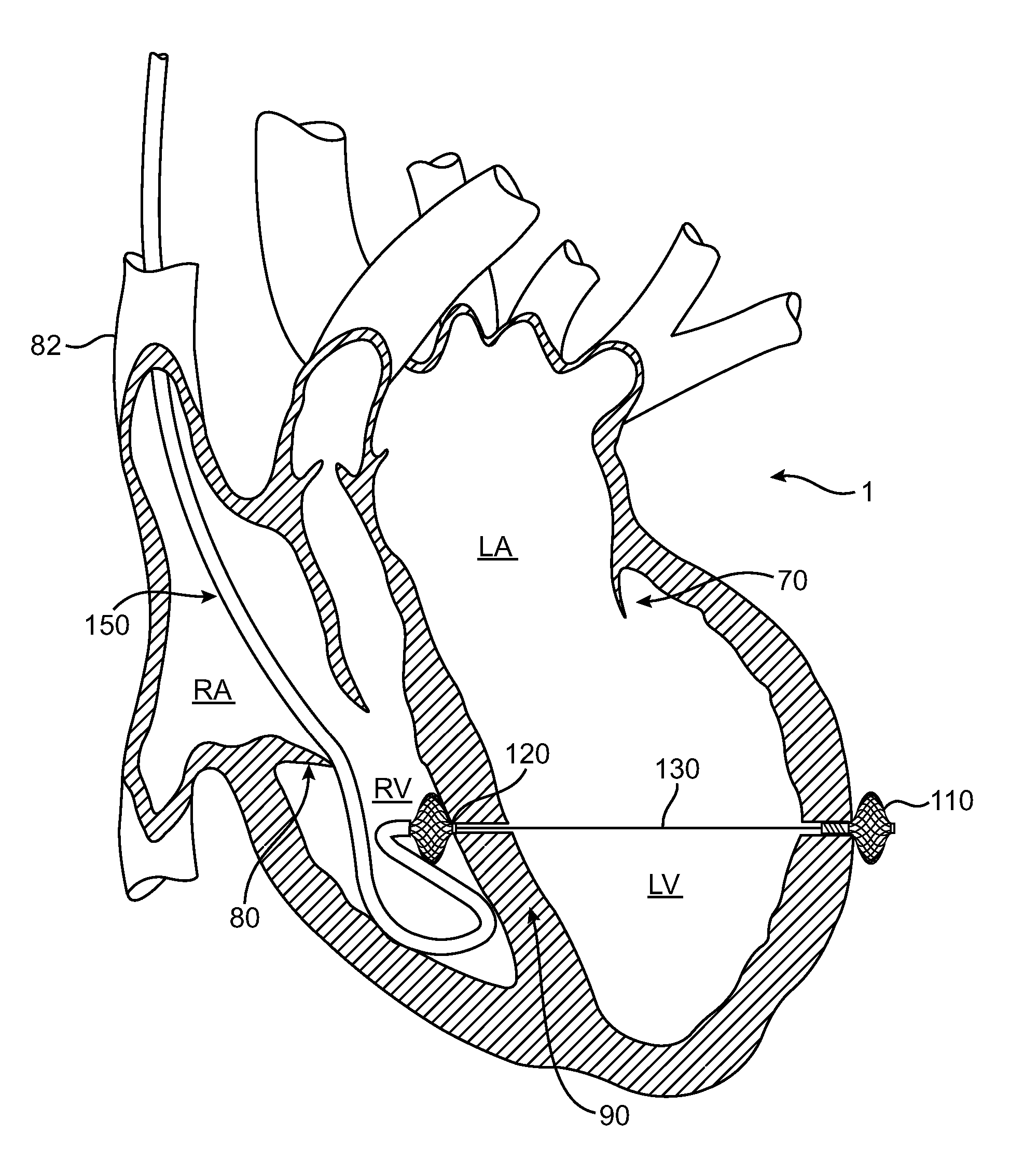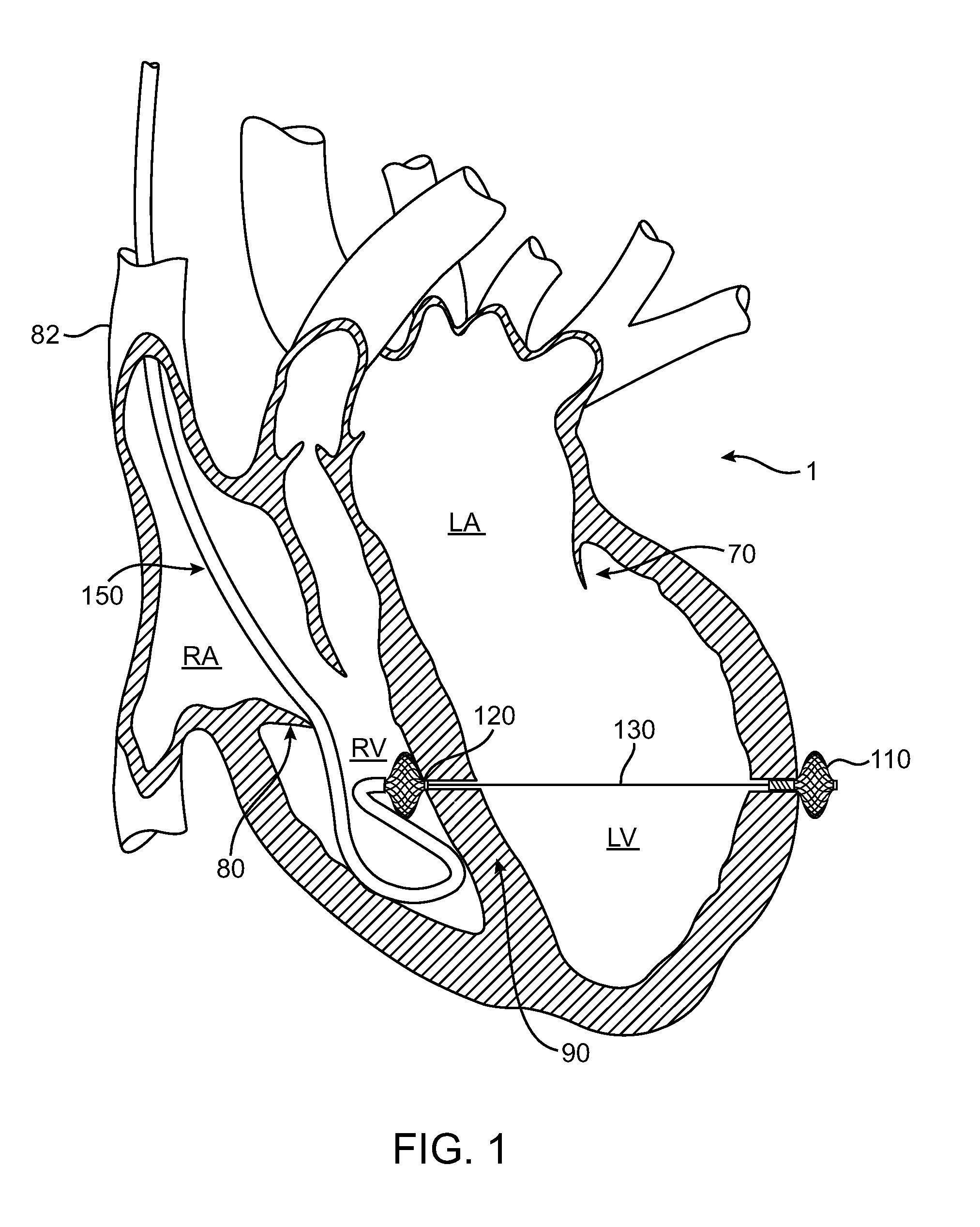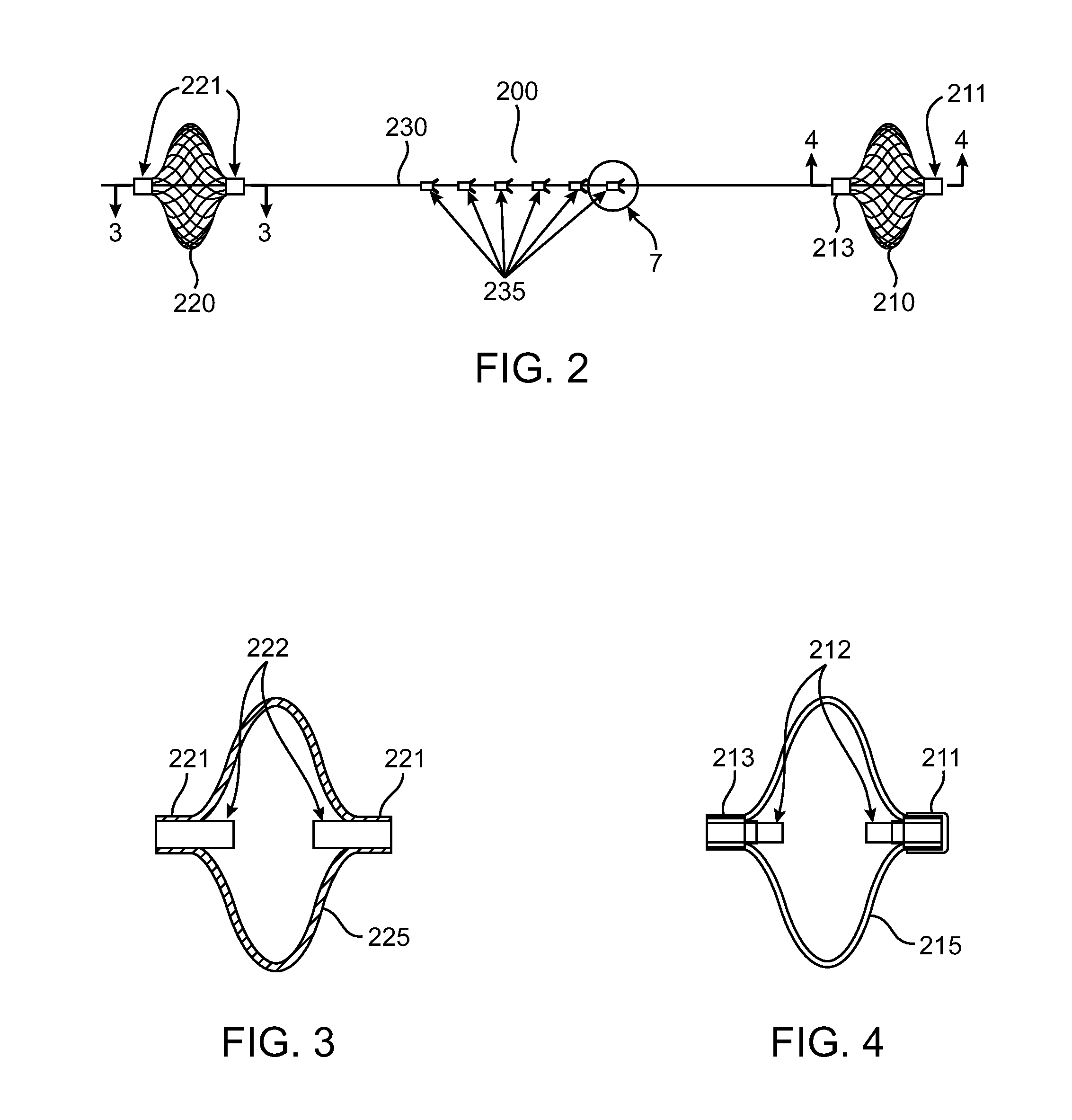System for Treating Mitral Valve Regurgitation
- Summary
- Abstract
- Description
- Claims
- Application Information
AI Technical Summary
Benefits of technology
Problems solved by technology
Method used
Image
Examples
Embodiment Construction
[0040] The invention will now be described in detail below by referring to the attached drawings, where like numbers refer to like structures. The present invention discloses a system for treating regurgitation in heart valves. The system is shown and described herein as it would be used to treat regurgitation of the mitral valve. The system includes catheters for navigating through the vasculature to chambers of a heart. The catheters can be used for delivering devices for treating heart valve regurgitation. The system also includes catheters for puncturing the wall of a heart chamber.
[0041] The catheter is delivered to the heart by passing it through the venous system. This may be accomplished by inserting the catheters into either the jugular vein or the subclavian vein and passing it through the superior vena cava and into the right atrium. Alternatively, the catheter may be inserted into the femoral vein and passed through the common iliac vein and the inferior vena cava into ...
PUM
 Login to View More
Login to View More Abstract
Description
Claims
Application Information
 Login to View More
Login to View More - R&D
- Intellectual Property
- Life Sciences
- Materials
- Tech Scout
- Unparalleled Data Quality
- Higher Quality Content
- 60% Fewer Hallucinations
Browse by: Latest US Patents, China's latest patents, Technical Efficacy Thesaurus, Application Domain, Technology Topic, Popular Technical Reports.
© 2025 PatSnap. All rights reserved.Legal|Privacy policy|Modern Slavery Act Transparency Statement|Sitemap|About US| Contact US: help@patsnap.com



